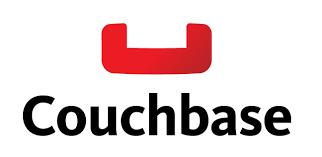
Introduction About Couchbase
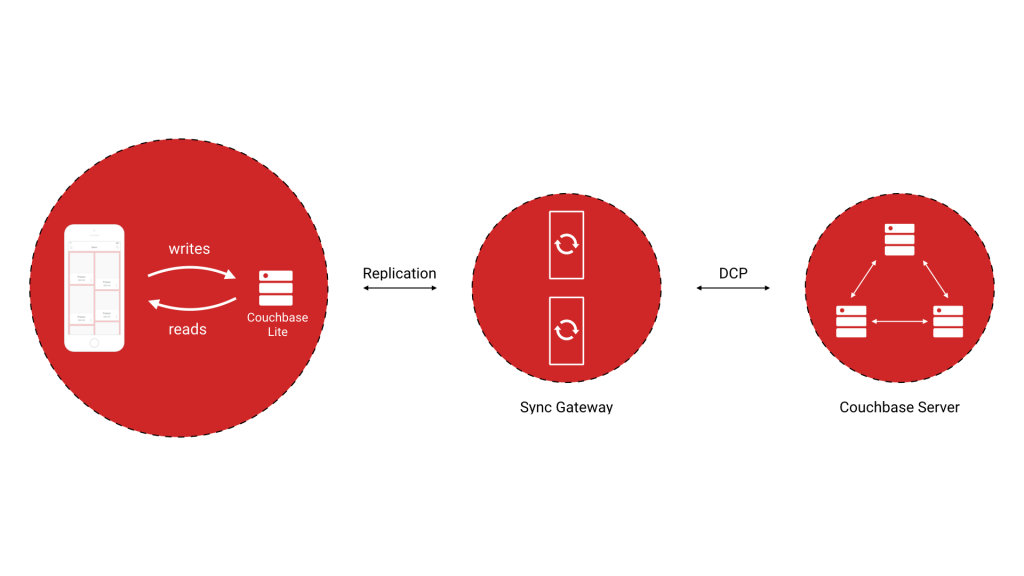
Couchbase Server is an open-source, distributed, multi-model NoSQL, JSON document database that is enhanced for interactive applications. Its server is designed to provide us with easy-to-scale key-value or JSON document access with high sustained throughput and low latency.
Moving to questions and answer
1. What is the Couchbase server?
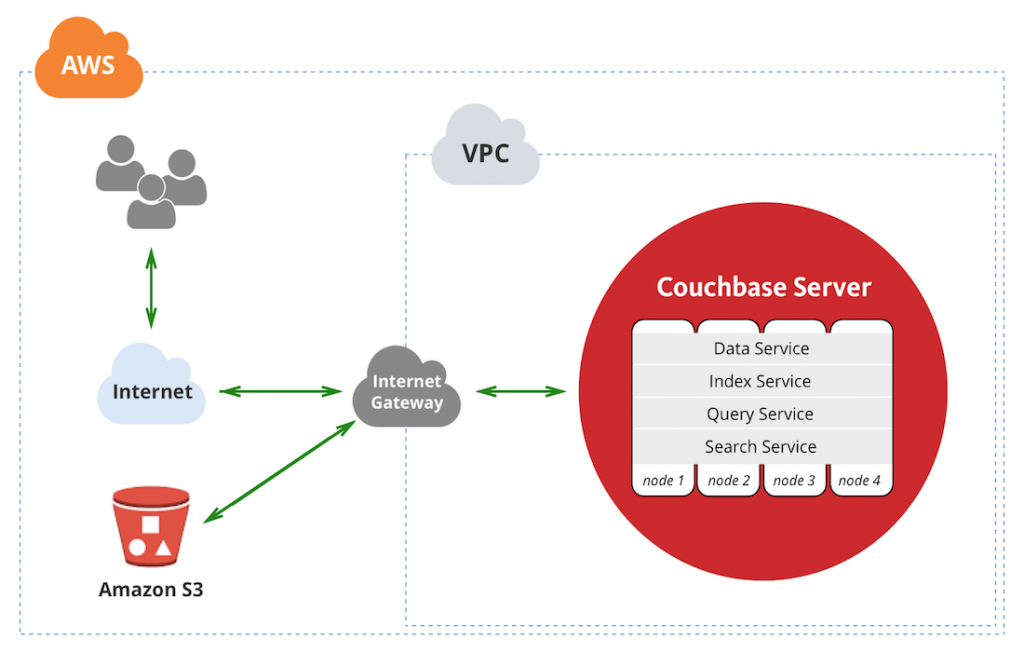
Answer: A Cloudbase server is basically nothing but a NoSQL database that is faster, elastic, as well as easy to use. It is regarded as one of the finest oriented-database software packages. The same is considered for the collective application that has multiple uses and is widely adopted in modern-day approaches.
2. What does N1Ql stand for?
Answer: It stands for the non-first normal form query language
3. Being an Open Source Technology, what are the other good things that you know about Cloudbase?
Answer: In addition to open source technology, the Couchbase was released under Apache 2.0 license. It comes with a community and an enterprise edition. It has multiform capabilities that make it good enough to be considered for the long run.
4. Do you think it’s vital to create a data bucket in the system? If so, why?
Answer: Yes, it is important. This is generally done because the server only prefers the data buckets when it comes to storing the data. When the server is installed, the default bucket gets created automatically.
5. What do you know about a shared server and a dedicated server?
Answer: Organizations and businesses these days have the option to consider a server that is only dedicated to them. No other organization or business shares the same. On the other hand, a shred server is distributed among many businesses and it hosts a lot of businesses. The shared hosting has a low price for obvious reasons as compared to a dedicated server. Both have their own pros and cons associated with each other. For businesses with small data needs and basic applications, the shared server is a good option to be considered.
6. What are the functional blocks involved in Couchbase Server?
Answer: Couchbase server involves two functional blocks. They are as follows:
- Data Manager
- Cluster Manager
7. Tell something about the Data Format in the Couchbase server?
Answer:
The most basic unit of the data man manipulation in the Couchbase Server is a document. Documents get stored in the JSON document format without any predefined schemas.
(OR)
Generally, it depends on the data and its type. Most of the documents and the files are present in the basic format and there are no predefined schemas. The files can be located in JSON format.
8. What is a data manager in the Couchbase Server?
Answer: It is actually a functional block with some useful applications. Actually, it is responsible for the purpose of extracting, as well as storing the data from the applications. There are certainly other important tasks which it performs and without making an impact on the overall functionality of the software
9. What do you know about the VBucket?
Answer:
There are situations when the data needs to be divided or a portioning is performed in a logical manner. VBucket is an approach that is adopted for the same purpose. All the buckets present in the Couchbase get divided automatically if this option is enabled by the user. One of the best things about this approach is the users can simply make sure of effective allocation of the data throughout a cluster.
(OR)
vBucket happens to be one of the logical ways of partitioning data due to the natural condition. It has been distributed over all the nodes in the clusters. The couchbase type bucket which gets designed in a group is split up automatically in a static group of slices. Then, buckets map to the individual server. They are designed and used to assign information more effectively.
10. What exactly does the Vbucket Map represents in the Couchbase?
Answer:
The vBucket map happens to be responsible for representing the state of the cluster as soon as a running rebalance operation is completed. Rebalance Orchestrator is a process that correlates the target current maps in order to conclude to implement the movement of Tap Streams in order to create and administer. The Rebalance operation will then get exhaustive only when there are similar current and Target vBucket Maps.
(OR)
Generally, it is preferred when it comes to representing the state of a cluster. This is done post the completion of the rebalancing operation. All the information regarding the same can easily be grabbed from the domain file present in the system.
11. Can you tell me something about the subsystems which are compatible with all the nodes in a network?
Answer: There are four subsystems that function on every node. They are as follows:
- Pattern Manager
- Pulses
- Single Ton Supervisor
- Progression Monitor
The Singleton Supervisor makes sure to select the cluster head if there is an issue with the one already assigned. The Pulses make sure of regular exchange of data in the application that is mandatory to accomplish some important tasks. On the other hand, the Progression manager is the subsystem that is preferred to monitor the tasks going on. It also resumes the procedures that don’t get completed or are unsuccessful. The pattern manager is responsible mainly for the processing of local configuration.
12. What is the strict upper limit on the storage capacity of a data bucket in Couchbase Server? Is it possible to extend the same?
Answer: Each data bucket is having a limit of 20MB. In case more storage is required, the same can be considered by taking the additional buckets into consideration.
13. Tell something about the features of Couchbase you are familiar with?
Answer:
There are certain features that make it simply the best. Couchbase is fast and known to process complex requests in a very short span of time. The users need not worry about the latency and the throughput. The overall cost that one needs to be invested in this is really low. Couchbase is simple to use and understand especially when it comes to installing, expanding, managing, as well as configuring for a basic change. The users don’t have to worry about anything when it comes to creating the schemas.
It is best when it comes to adapting to the changes. All the minor and in fact, major changes can easily be adopted by this server in a very simple manner. The overall number of nodes can easily be extended without worrying about the performance. In addition to this, Couchbase is business-ready software and it can manage critical applications.
14. Name the elements which are present in Couchbase Node?
Answer: Every Couchbase Node contains four elements. The elements have been mentioned below point-wise.
- Index Service
- Data Service
- Cluster Manager component
- Query Service
15. What is the strict upper limit on the storage capacity of a data bucket in Couchbase Server? Is it possible to extend the same?
Answer: Each data bucket is having a limit of 20MB. In case more storage is required, the same can be considered by taking the additional buckets into consideration.
16. What do you mean by the term data replication?
Answer: Replication is a term that defines that the same type of data is present at multiple locations in the server. The same can put an unnecessary burden on the performance and sometimes, it takes additional cost for the organization.
17. Name the programming language that Cluster Manager uses?
Answer: Erlang Programming Language
18. What are the good reasons for you to consider the Couchbase Server?
Answer: There are certainly good things about the Couchbase that makes it simply the best and there are tasks that can easily be accomplished through it. The very first thing is the maintenance which is very simple and users need not worry about the same. Any sort of application even when they are different in features can be considered with it. The Couchbase is the server that simply makes sure consistency as well as control. In addition to this, flexibility and scalability are the other factors responsible. The users are free to keep up the pace easily with the multiple use cases. Also, the biggest features of couchbase are that users can deploy several types of databases very easily.
19. How many TCP ports are there to listen to the requests?
Answer:
There are two TCP ports that are used to listen to requests.
Port 11210
Port 11211
The 11210 follows the cluster expansion rule while the Port 11211 follows the hashing algorithm
20. How the task of locating a document in the Couchbase can be made easy according to you?
Answer: By considering the JSON format, this task can be made very easy and the best part is that things are done in a rightful manner only through this approach.
21. What is the Role-based access control authentication approach in the Couchbase?
Answer:
Role-Based Access Control is capable enough of ensuring cluster resources are exclusively accessed by customers with suitable privileges. Talking about privileges, these are gathered in Couchbase-defined groups. Each set or group is associated with an individual role. Users are ensured to assign one or many roles, and the privileges are granted which are associated with every role.
(OR)
It simply makes sure that the cluster resource can be used only by those users which are authorized to do so. In the server, there are privileges are defined into different sets and these sets are often dedicated to some or one specific node. One user can have multiple roles and they are often granted access to the privileges.
22. Tell something about the Cluster Manager in the Couchbase Server
Answer: It is mainly responsible for keeping an eye on the performance, as well as on the way the nodes are connected to a server. Depending on the tasks, there are certain types of methods through which the nodes can be connected to a server. It also makes sure that the code runs successfully on each lump. It also keeps a node reserved for aggregation purposes.
23. What are the chances of a Couchbase server failure and what are the factors that can be held responsible for the same?
Answer: The chances for the failure of a server are very less and the best thing is the overall number of failures reported about Couchbase is very less. Some of the factors that can cause this issue are listed below
- Failure of the power
- No maintenance of the server
- Presence of inauspicious data
- Improper Integration
- Hacking related issues
- Slow bandwidth
- Improper allocation of the same
24. In a database, how can you define a document?
Answer: It is nothing but a general entry made to a database. A document can have a specific ID related to it and the same can be used for locating the document in the server. The real application data remains present in the document and the same can be accessed anytime by the user whenever the need of the same is realized by the user. Documents also provide basic information about a specific task that is important.
25. What sort of technical specialty is required to handle the Couchbase or to work with the same?
Answer: Basic knowledge about the network and computing is mandatory. Network communication basics, installation of the network, and maintenance of the same are the other skills that are helpful. The other skills depend on the task assigned to you.
26. What do you mean by the Cross Datacenter Replication?
Answer:
XDCR or Cross Datacenter Replication helps in providing a seamless mode to replicate data from one set to another. Cross Datacenter Replication involves replicating active data to N+1 Server clusters, or even external apps such as Spark, Elastic, Storm, and so forth. The sets are used for various geographically diverse data centers. They are used either for bringing data closer to customers for fast-paced data access or the recovery of any disaster.
(OR)
When it comes to replicating the data from one cluster to another, cross-data center replication is considered. When the data centers are geographically different or when they are diverse, this approach is also considered for eliminating various problems from the domain.
27. How Couchbase Data Platforms are useful in building applications that are scalable?
Answer: It provides a uniform, simple, quick, and in fact a powerful application development API that always makes sure of applications that are good enough to be considered. As it can easily be deployed, the application needs can be fulfilled in a very short span of time. Intelligence can easily be added to the applications, time delays can be avoided and the overall downtime can be reduced up to a great extent.
28. What are the capabilities of a core database engine?
Answer: There are certain abilities of the same which are very useful when it comes to managing the data of the applications. In addition to this, it is also good enough to be trusted for document applications. The users can easily deploy its architecture anywhere they want. Other capabilities include caching of data, data persistence, as well as database management.
29. How will you define Couchbase Server?
Answer: Couchbase Server is a fast, seamless, NoSQL database that was initially termed as Membase. It is a software package that is technologically advanced multi-model NoSQL and is file-oriented. It has been proposed for interacting through web applications.
30. Can nodes be added easily in the Couchbase or there are some special conditions that need to be fulfilled?
Answer: It is possible to add nodes without meeting the complex criteria in Cubase.
31. Briefly explain the four subsystems that function on each node
Answer: The four subsystems that function on each node are Pulses, Progression Monitor, Worldwide Singleton Supervisor, and Pattern Manager. The explanations have been mentioned right below.
Pulses: A set of words are exchanged by the Watchdog developers regularly. The exchanging process is carried forward with the currently chosen cluster head in order to provide well-being revises.
Worldwide Singleton Supervisor: Worldwide Singleton Supervisor, is one of the subsystems which is tasked to select the cluster heads only in case the previously voted head stops.
Progression Monitor: Progression Monitor is that subsystem that helps in monitoring in carrying out the limited executive. Thereby, it resumes unsuccessful procedures as per the need. Finally, it contributes state data to those beating pieces.
The Pattern Manager: Each node in the set features a specific pattern, for example, the intention map or vBucket map, so on and so forth. Pattern Manager receives, monitors, and processes the local configuration.
32. What is the difference between Couchbase and CouchDB?
Answer:
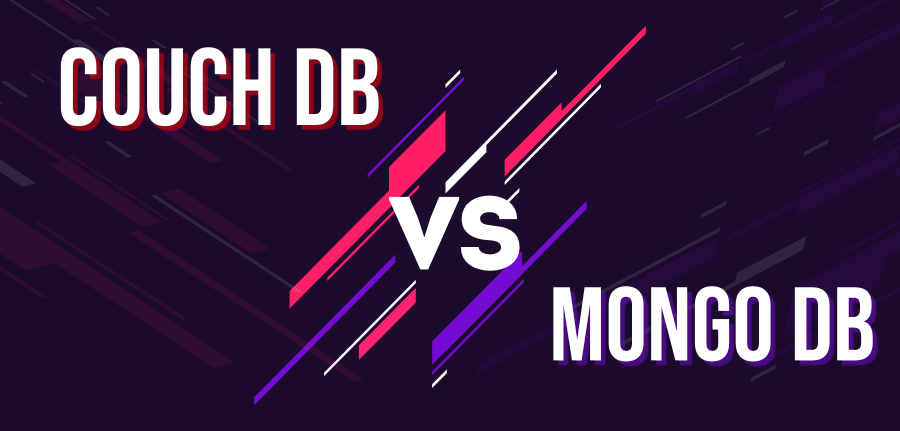
Couchbase is capable enough of storing key values as well as credentials. Thus, it can store data like binary data, JSON documents, and many more. Couchbase Server makes use of a binary Memcached protocol to perform the high-end functionalities as well as REST API’s SQL in order to view the queries.
Apache CouchDB, on the contrary, is capable of storing JSON documents. It also provides facilities to attach non-JSON files to JSON documents.
33. What do you mean by Data Manager and Cluster Manager in Couchbase Server?
Answer: Couchbase server involves two functional blocks (Data Manager and Cluster Manager), which are explained right below.
- Data Manager – It is responsible for extracting and storing the data from apps. Data Manager discloses two ‘memcapable’ docks within the sets of connections. The non-vBucket aware client libraries are guided by 1 port. On the contrary, the vBucket aware client libraries will be guided by another one. Almost all data manager code has been written in the C and C++ programming languages.
- Cluster Manager – It is designed in order to look after the performance as well as the arrangement of the nodes in the couchbase server cluster. The Manager’s code will be running on every lump in clusters. After that, it chooses on the node for the purpose of aggregation. Almost all Cluster Manager Code has been written in Erlang/OTP.
34. How does Couchbase speed up the accession to a particular database document automatically via memory?
Answer: Couchbase Server 2.0 comes from a host of experiences with Memcached. The accession to the documents is gone through the integrated RAM caching layer that has been made up of Memcached. This helps in providing low and predictable latency under immensely heavy loads.
35. Can Couchbase speed up the accession to any database document by catching it in memory automatically?
Answer: The answer is, definitely, Couchbase has the capability of speeding up access to any database document by automatically catching it in the memory.
36. What Is Document in Couchbase?
Answer: In Couchbase, a document usually refers to an entry in the database. A document consists of an ID that happens to be unique by nature. Its value contains the real application data. Documents are stored on the server as JSON. While JSON is a structured format that happens to be a structured format, it can be searched and accordingly get queried by following the below-mentioned command.
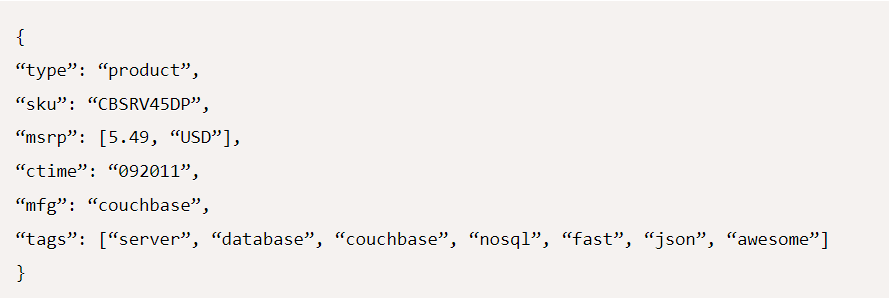
37. What is Analytics in Couchbase?
Answer:
Analytics in couchbase is designed to run complex queries over numerous records with efficiency. Complex questions mean large ad hoc join, aggregation, set, and grouping operations, any
of them may result in long-running queries, high consumption of memory, high use of CPU, and/or excessive network latency due to data fetching, and also due to cross node coordination. Couchbase Analytics is mostly preferred for expensive queries
38. Explain the features of the Couchbase server?
Answer: The key features of the Couchbase Server are as follows:-
Fast – Couchbase Server is high-speed and it process complex requests in a short time. Couchbase Server provides low latency and high throughput. The performance cost is also very low.
Simple – Couchbase Server is straightforward to understand, manage, install, expand and use. On the couch. It is not essential to create and maintain the schemas in a couchbase server.
Elastic – The Couchbase Server makes it very easy to relate the optimal quantity of resources to the ever-changing requirements of an application by distributing the data and me/O over virtual machines or over commodity servers. In couchbase server, the nodes can be extended from 1 to 100 tons and can also get reduced to uphold the application performance.
Adaptive:- Couchbase servers adopt minor and significant changes in a straightforward way.
Reliable – Couchbase server is very much stable and enterprise-ready software, therefore, anyone can trust in mission-critical applications.
39. What is Kafka?
Answer: Kafka is a message divider project coded in Scala. Kafka was originally developed by LinkedIn as an open-source project in early 2011. The purpose of the project was to achieve the best stand for conducting the real-time statistics nourishment.
40. What major role does a Kafka Producer API play?
Answer: It is responsible for covering two producers: Kafka. producer.SyncProducer and Kafka.producer.async.AsyncProducer. Kafka Producer API mainly provides all producer performance to its clients through a single API.
41. Inside the manufacturer, when does the QueueFullException emerge?
Answer: QueueFullException naturally happens when the manufacturer tries to propel communications at a speed that a broker can’t grip. Consumers need to insert sufficient brokers to collectively grip the amplified load since the producer doesn’t block.
42. How to start a Kafka server?
Answer: Given that Kafka exercises ZooKeeper, we can start the ZooKeeper’s server. One can use the convince script packaged with Kafka to get a crude but effective single-node ZooKeeper instance:
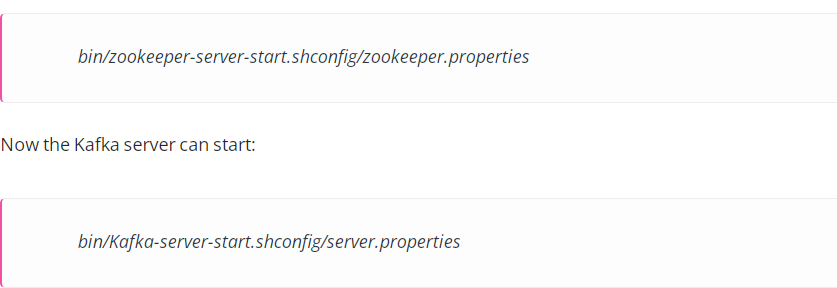
43. How can you say that a Couchbase Server is different from that of database software?
Answer:

44. What Is N1QL?
Answer: N1QL happens to be a query language or the non-first usual form of the query language. It is purposed to manipulate JSON data in the Couchbase server. Some of its statements to operate the JSON data are as follows
- INSERT
- DELETE
- UPDATE
- MERGE
- SELECT
45. What is Querying data in Couchbase?
Answer: There are two patterns for querying data from Couchbase. The most efficient one is via key pattern. If the key of the document is known, the complexity of retrieval of the documents is O(1). It is also possible to retrieve multiple documents using multi-get. Using batch retrieval is very efficient when the client needs to deal with a list of documents because the number of client round-trip calls is reduced.
46. How is Couchbase Monitoring the statistical analysis?
Answer: Couchbase Server incorporates a complete set of statistical and monitoring information. The statistics are provided through all of the administration interfaces. Within the Web Administration Console, a complete suite of statistics is provided, including built-in real-time graphing and performance data.
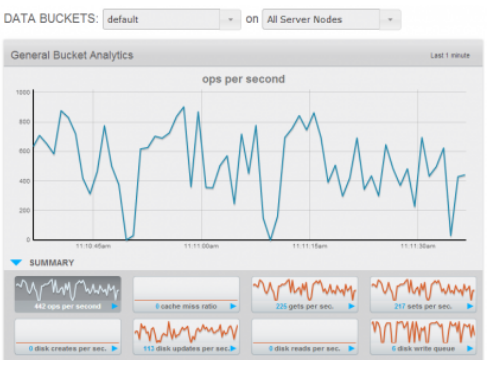
The statistics are divided into a number of groups, allowing you to identify different states and performance information within your cluster:
By Node – Node statistics show CPU, RAM, and I/O numbers on each of the servers and across your cluster as a whole.
By vBucket – The vBucket statistics show the usage and performance numbers for the vBuckets used to store information in the cluster.
By View – View statistics display information about individual views, including the CPU usage and disk space used so that you can monitor the effects and loading of a view on Couchbase nodes.
By Disk Queues – monitor the queues used to read and write information to disk and between replicas. Can be helpful in determining whether the cluster should expand to reduce disk load.
47. Why Does CouchDB not use Mnesia?
Answer: There are many reasons behind CouchDB not using Mnesia:
- It provides a storage limitation of 2 gigs per file.
- It requires validation and fixup cycle after a crash or power failure, so even if the size limitation is lifted, the fixup time on large files is prohibitive.
- Mnesia has some useful features, but features of Mnesia aren’t really useful for CouchDB.
- Mnesia is not a general-purpose, large-scale database. It works best as a configuration type database.
- Mnesia works best as a configuration type database. It is necessary for the normal operations. The type where the data is not central to the function of the application, but necessary for normal operation of it.
- Things that need to update, configure and often reconfigure like a network router, HTTP proxies, etc. whose configuration data is rarely huge.
48. As CouchDB is written in Erlang and Erlang is known as slow to adopt Unicode. So, if it creates a problem for CouchDB?
Answer: CouchDB uses Erlang binary internally. So, data that come to CouchDB is always UTF-8 encoded. There is no problem occurred.
49. What is Index in Couchbase?
Answer: Multiple TCP ports are used by Couchbase Server to facilitate the network communication between Couchbase clients, as well as with server components. Some various ports are used for cluster management. The TCP ports enable the Couchbase server to work correctly. The other ports are used by the Couchbase services and only open on the required nodes where services are running.
50. What is the use of Cluster Manager in Couchbase?
Answer: Basically, Cluster Manager in Couchbase runs on all the nodes of a cluster. The Cluster Manager coordinates cluster-wide operations and maintains essential pre-node processes. The architecture of the cluster manager mainly consists of two processes such as babysitter and ns-server. The babysitter is responsible for maintaining a wide variety of Couchbase Server Processes. Ns-server is mainly used to manage the node’s participation in the cluster.
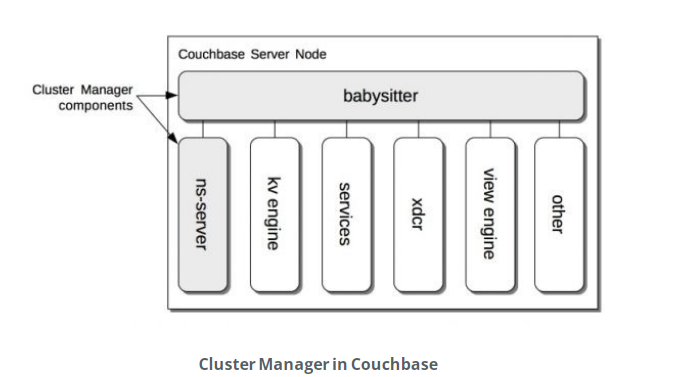
I’m a DevOps/SRE/DevSecOps/Cloud Expert passionate about sharing knowledge and experiences. I am working at Cotocus. I blog tech insights at DevOps School, travel stories at Holiday Landmark, stock market tips at Stocks Mantra, health and fitness guidance at My Medic Plus, product reviews at I reviewed , and SEO strategies at Wizbrand.
Please find my social handles as below;
Rajesh Kumar Personal Website
Rajesh Kumar at YOUTUBE
Rajesh Kumar at INSTAGRAM
Rajesh Kumar at X
Rajesh Kumar at FACEBOOK
Rajesh Kumar at LINKEDIN
Rajesh Kumar at PINTEREST
Rajesh Kumar at QUORA
Rajesh Kumar at WIZBRAND

 Starting: 1st of Every Month
Starting: 1st of Every Month  +91 8409492687
+91 8409492687  Contact@DevOpsSchool.com
Contact@DevOpsSchool.com
